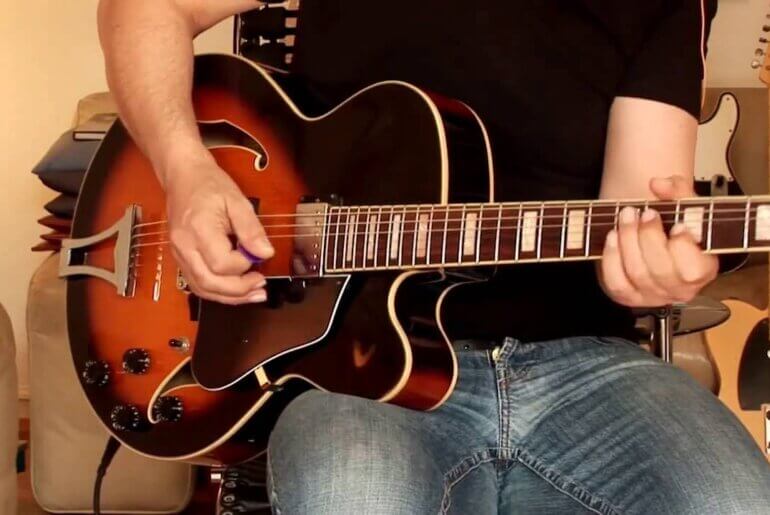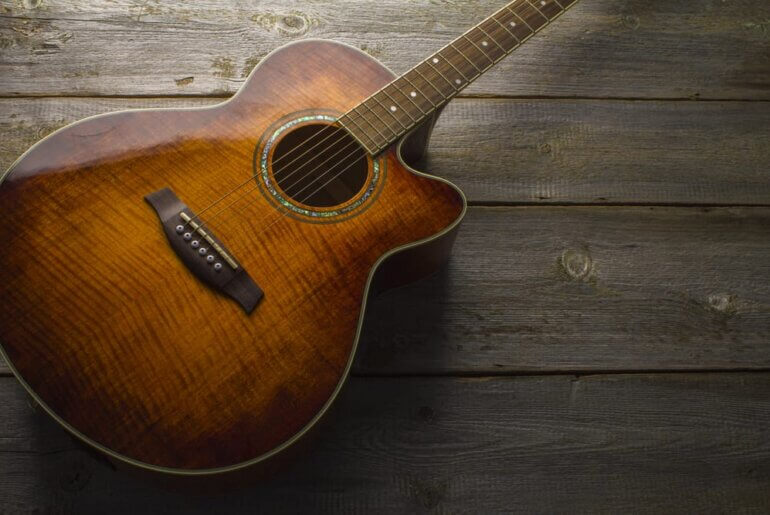There have been infinite attempts to classify various types of guitars. Different attempts are based on the varying characteristics of Guitar. Some of the most basic attempts to classify types of Guitars are based on the shape of a Guitar, type of sound it produces, number of strings, wood type, etc. Broadly, there are two types of Guitars; 1) Acoustic, 2) Electric and then there are many sub-types within them. To date, the debate on which attempt is the best attempt to classify types of the guitar is on.
To understand the basic construction of Guitar and the method in which sound is produced in it, this guide classifies Guitar into six types:
- Acoustic Guitar
- Electric Guitar
- Twelve-string Guitar
- Resonator Guitar
- Bass Guitar
- Steel Guitar

Basic Construction of Different Types of Guitars:
The basic construction of most of the Guitars is the same. For understanding the basic construction of a guitar, it is important to understand its parts and their functionality. A guitar comprises of: back, body, bridge, endpin, fingerboard, frets, headstock, neck, nut, sides, strap pin, strings, top and tuning machines.
Back
The back of the guitar is that part, which holds the sides in its places. The construction of the back comprises two to three pieces of wood. The overall tonal quality of an acoustic guitar depends on the specie of wood used for manufacturing the back of the guitar.
Body
The body is the box that provides an anchor for the other parts like the neck and bridge. This box provides a surface for playing hand. An acoustic guitar’s body includes the sound chamber that amplifies the tone.
Bridge
Usually, it’s a wooden plate that connects the string to the body. The bridge is responsible for maintaining the overall tuning of Guitar.
End Pin
An endpin is a metal post. The rear end of a guitar connects with the strap, using an endpin. If the acoustic guitar that you are using has electrics inside it, the endpin doubles.
Fingerboard
The fingerboard is the wooden piece that you can find above the neck. The name has a reason behind it. Fingerboard because it is at this place where a player places his/her fingers in the chord position.
Frets
Frets are thin metal wire material that is placed at a 90-degree angle to strings of a Guitar. These are responsible to minimize the vibrating effect generating due to strings. Frets enable players to produce the sound of different tones on a Guitar.
Headstock
That part of Guitar where its tuning machines are present is called Headstock. Apart from tuning machines, the headstock also displays the manufacturer’s logo.
Neck
The headstock of Guitar is connected to its body by a long club-like wooden piece which is called Neck.
Nut
Nuts are grooved in silver of stiff nylon color or other synthetic substances. They stop the vibration of strings beyond the neck region. Strings pass through these grooves on their way to the tuners inside the headstock. The nut is one of the two points at which the vibrating area of the string ends. The other part where this vibration ends is the bridge.
Sides
The part that separates curved wooden pieces on the body and joins the top to the back is called sides.
Strap pin
Strap pin is that metal post where the front, or top, end of the strap connects.
Strings
They are either metal or nylon wires that, drawn taut, produce the notes of the guitar. Although not strictly part of the actual guitar, strings are attachable and removable at will on top of the guitar. Strings are an integral part of the whole system of the guitar. Typically, any guitar’s entire design and structure revolves around making the strings ring out with a joyful noise.
Top
The face of the guitar is called the top. Specifically for an acoustic guitar, this piece is also the sounding board, which produces almost all the guitar’s acoustic qualities.
Tuning machines
Geared mechanisms that raise and lower the tension of the strings, drawing them to different pitches are called Tuning machines. The string wraps tightly around a post that sticks out through the top, or face, of the headstock. This post passes through to the back of the headstock, where gears connect it to a tuning key that is also known as tuners, tuning pegs, and tuning gears.
Types of Guitars:
As mentioned before, there are certain standard types of guitars. The guide below will help you differentiate between each of these and offer you the basic knowledge about these guitars.
Acoustic Guitar:
Acoustic guitars find their place in a variety of genres like jazz, blues, country, pop and rock, ragtime, folk, etc. Whether the performance is in a personal setting, or in an amphitheater, an acoustic guitar can be heard without amplification. In other performance scenarios, amplification is a must-to-have for the audience to be able to hear the guitar well. There are two ways in which an acoustic guitar can be amplified:
- By placing an amplified microphone near the soundhole of the guitar.
- By installing an electric pickup in the guitar body.

It is important to know that an acoustic guitar with an installed electric pickup won’t become an electric guitar. It would still remain an acoustic guitar. Moreover, there are few acoustic guitars that could help enable amplification because of their inbuilt electronics.
How is the sound produced?
The shape of the acoustic guitars is what helps these to project sound. Players are able to play the same notes as pianos, banjos, and mandolins and yet create a sound that is of their own and unique.
Sound is a result of acoustic guitars’ vibrations. The strings on the acoustic guitar vibrate when strummed to create sounds that resonate through the instrument. The vibrations generated in the string, move into the saddle. The saddle transmits sound to the guitar’s soundboard. From here, the vibration is amplified and the soundhole releases the sound.
Where the soundhole is located makes a difference too. You can compare a guitar to a flute and see how soundhole location plays a role in how an instrument sound. When you play one flute, the sound only comes out of the hole that is not covered. As you start covering different holes, the sound changes. The same thing happens with the vibrations in the guitar. They travel through the guitar and come out of the soundhole. This is where the transformation takes place, during that journey. The placement of the soundhole is helping to shape the end result to make a distinct sound.
The sound output is shaped by all the different parts that it passes through. The body of this guitar alters the speed and intensity of the vibration to produce a unique sound. A guitar is shaped differently from a piano or mandolin, which plays a huge role in how the sound comes out.
Effect of shape on sound:
The entire shape of the acoustic guitar has an effect on the overall sound as well. The neck, headstock, and other parts of the body, all affect the sound in different ways and help acoustic guitars to produce a variety of sounds. There is a wide range of acoustic guitars available in the market to pick from. The subtle differences in manufacturing differentiate between them and the sounds they produce.
The higher quality guitars are those that produce clarity of sound and the pleasing effect when played. Acoustic Guitar manufacturers are putting their huge efforts to ensure they could get the perfect sound from the guitar. This is the reason why you find a few guitars to be highly expensive. And, why not, there has been so much hard work put forth to make these produce that wonderful sound. It’s not difficult to make a guitar that can produce a sound. But to have the sound come out the guitar clear, precise and at the right pitch requires fine craftsmanship. Different materials create different sounds- the more expensive the materials are, the more likely they are to create different sounds from guitars, than cheaper materials (like plastic).
Pros and Cons:
Pros
- The extra cost of buying an amplifier or its cables isn’t in the picture. Hence, it is a much more affordable option for a beginner who is starting to learn how to play guitars.
- The playability of an acoustic guitar player is always more than that of an electric guitar player. So if you are able to play a piece on an acoustic guitar, you will more than likely be able to play it on an electric guitar. The opposite of this does not hold true.
- The tone of an acoustic guitar is naturally soothing and calm compared to the distorted tone experienced on an electric guitar. Where ever an acoustic guitar player chooses to play, he/she ends up creating a favorable environment for those around them practicing area.
Cons
- The strings of Acoustic guitars are designed heavier comparatively. This heaviness might give a beginner difficulty in fingering and will demand picking that is firm. In turn, this difficulty can cause pain on the fingertips and ultimately discomfort something that discourages beginners.
- Acoustic guitars are more fragile than electric ones.
- They tend to have fretboards that are wider than those on electric guitars. This is not a feature that is beginner-friendly. Higher gauge strings make it more difficult to hold bar chords compared to typical electric guitar strings.
- Strings on acoustic guitars have a greater tendency to produce a buzzing sound than strings of other guitars.
Electric Guitar
Rock music wouldn’t be as popular as it is currently, if not for electric guitar. Other famous genres popular because of electric guitars are jazz, blues, and even pop music. When compared to an acoustic guitar, electric guitar requires amplification for performances as well as practices. The sound of an amplified electric guitar is very different when compared to that of an acoustic guitar. Even without effects or distortion the pickups and amplifiers define the electric guitar’s sound to a large extent.
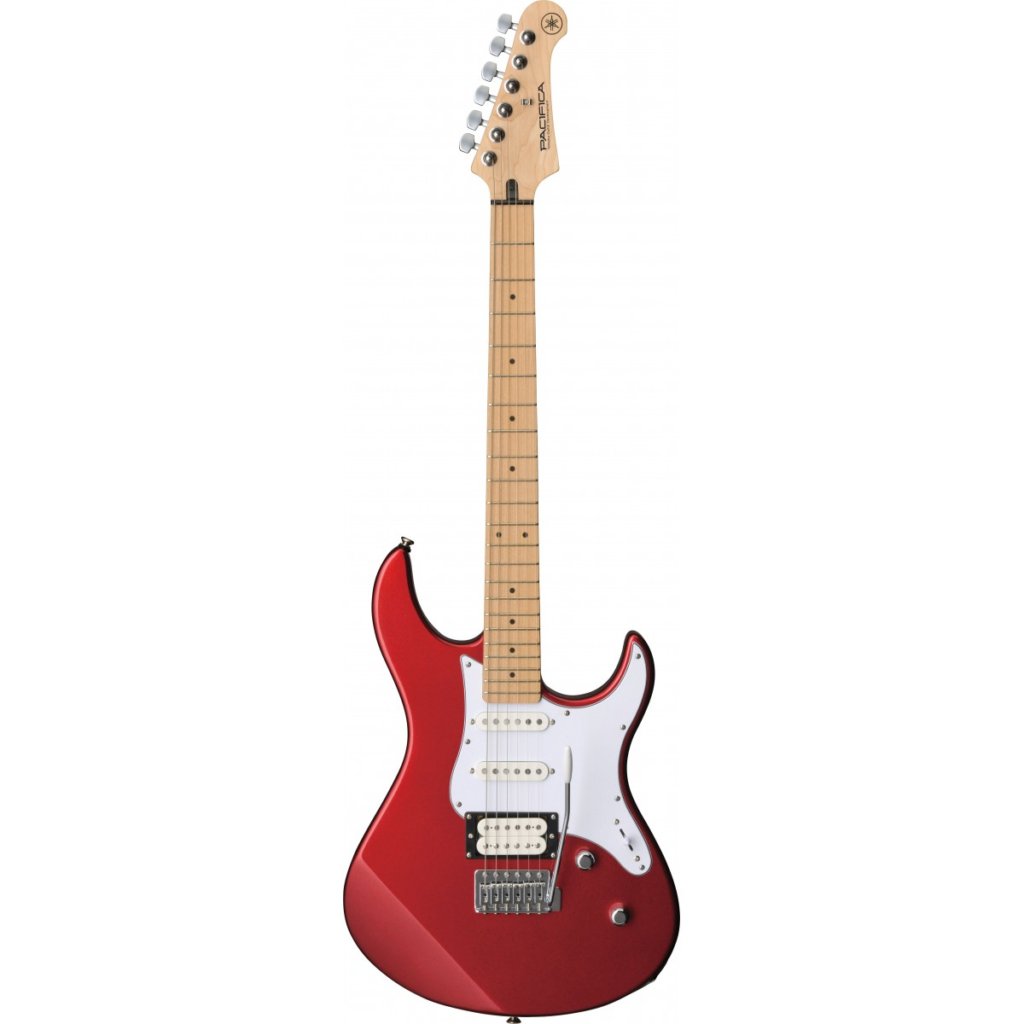
Similar to an acoustic guitar, the electric guitar too has a poor sustain. However, amplification and especially overdrive increases the apparent sustain and feedback can allow a note to be sustained indefinitely, even for several minutes.
Technically speaking, an electric guitar is any guitar with an electromagnetic pickup that amplifies the sound created by the vibration of the strings. Electric guitars come in a variety of shapes and sizes which are not always limited to the acoustical qualities of the shapes. The two most popular basic shapes of an electric guitar are the Stratocaster style and the Les Paul style. Among all, the solid-body electric guitars usually create little sound. Hence, these do require an amplifier for bigger performances with large audiences.
How is the sound produced?
A traditional acoustic guitar creates its sound completely through vibration. An electric guitar creates the sound with the same technique as an acoustic guitar does, but in addition to that, the electric guitar also amplifies the sound.
All of the vibrations created by strings, resonate within the body of the guitar and further amplify to produce louder volumes. An electric guitar is identical to an acoustic guitar in terms of the creation of vibrations. However, the process of amplifying the sound differs completely. Electric guitars make use of electromagnetism. Alongside this, these instruments use pick-ups for detecting the string vibrations. These vibrations travel from the pickups to an amplifier and a speaker.
Electromagnetism is a phenomenon that is based on Faraday’s laws i.e. whenever there is a change in the electric field, there is a change in a magnetic field and vice versa. Guitar pick-ups make use of magnets. Further, wrapping hundreds or thousands of coils of thin wire around them. The guitar pick-ups stay inside the body of an electric guitar underneath the strings. Hence, the magnetic field formed due to the magnets gets through the strings.
Whenever anyone plays the strings, the vibrations of the strings slightly change the magnetic field of the magnets, which in turn changes the electric field that flows through the tiny wires wrapped around the magnets. Later, with alteration happen because of the volume alongside the tone circuits to these small currents. Finally, the currents flow out of the guitar through the guitar cable producing the sound that you hear in rock, blues, jazz, and various other kinds of genres.
Amplifier:
The complicated electronics behind amplifiers can be simplified into two parts. The first part is the preamp and the second is the power amplifier. The preamp takes away the current that is coming through the guitar cable and makes it ready for power amplification. This preparation often includes a small boost in amplitude as the signals coming from the pickups are very small.
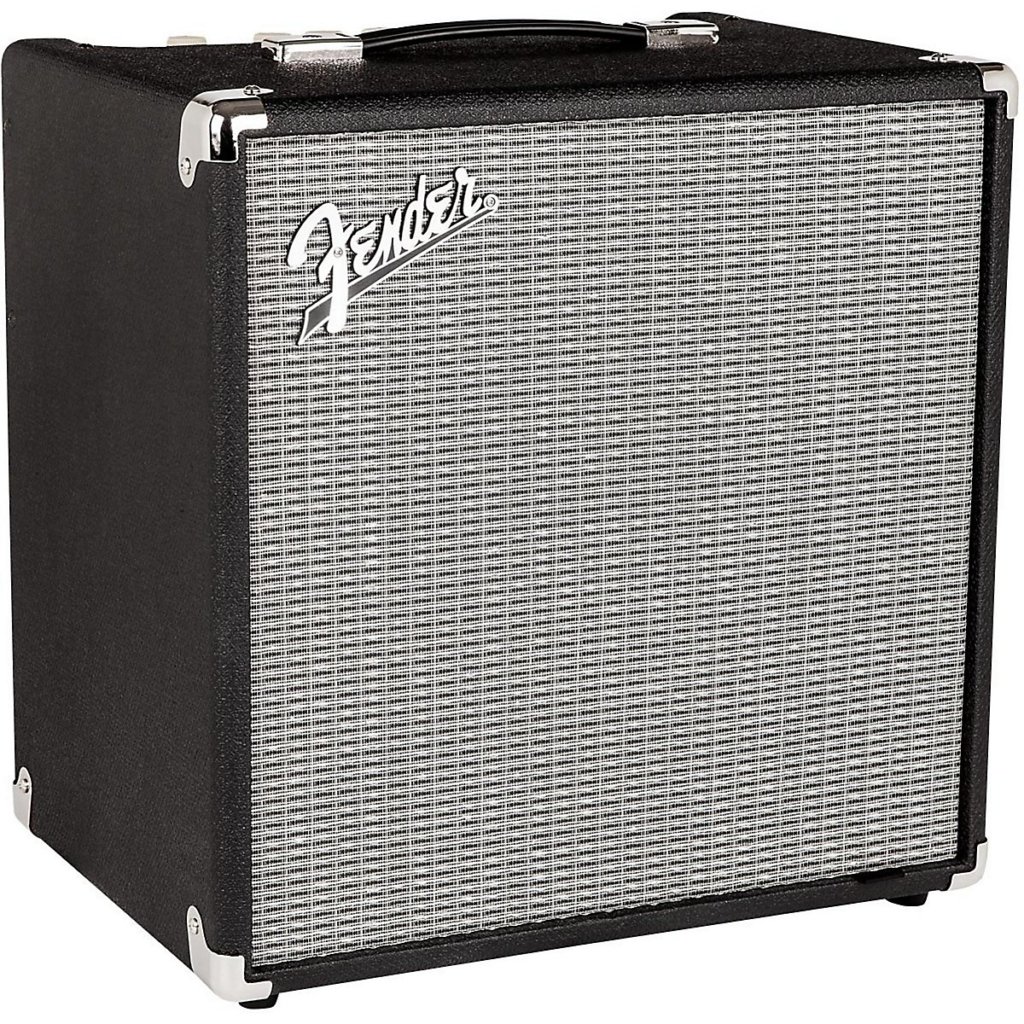
Preamps can also act as a filter for the signal. If the signal coming from the pick-ups is scratchy or noisy then it is the duty of the preamp to filter this out, creating a much more pleasant tone. Lastly, most preamps come with some sort of equalizer. An equalizer is a complex circuit that allows the user to boost or cut certain frequencies of the incoming signal. By increasing frequencies, the signal can be made to sound brighter. By boosting the bass frequencies, the user can create a fuller and deeper sound, and so on.
The second part of the amplifier, the power amp, is much simpler. As its name suggests, its purpose is to solely add power to the signal. There are two different types of power amplifiers used today. The first type, adds power to the signal by using an electrical component called a transistor. Transistors allow frequencies in small signals to be replicated in much larger signals. Power from the wall outlet is used to power the final signal that is finally sent to the speaker.
Pros and Cons:
Pros
- While playing an electric guitar, one would have to choose from the different types of guitars (electric) that are available. Some electric guitars are known for playing blues, while others are known for playing shredding and so on… This allows a player of the specific genre the exact choice that he/she is looking for.
- The sound quality of an electric guitar is such that it would enable us to reach out to a large audience. So if an electric guitar is played correctly, it bound to rock the stage.
- Electric guitars are smoother to play than acoustic guitars.
Cons
- For playing an electric guitar, one needs a lot of instruments. An amplifier, a wah pedal, cables, and spare guitar pickups are some of the most used instruments that one needs with an electric guitar.
- Electric guitars are costlier than acoustic guitars and hence not recommended for beginners.
Bass Guitar
Bass guitars have similar design features to other types of guitars. The few features that are different in a bass guitar are thicker strings, longer neck, and larger body. These features allow lower notes to be created when the strings are tuned to a playable tension. They are sometimes categorized as guitars but are also occasionally categorized as separate instruments. You may find a lot of variations in the bass guitars. However, in standard design, there are four strings tuned EADG. Although the bass guitar can be played like an oversized guitar, it also draws much inspiration from double basses and the instrument has a vocabulary of playing styles and music all of its own.
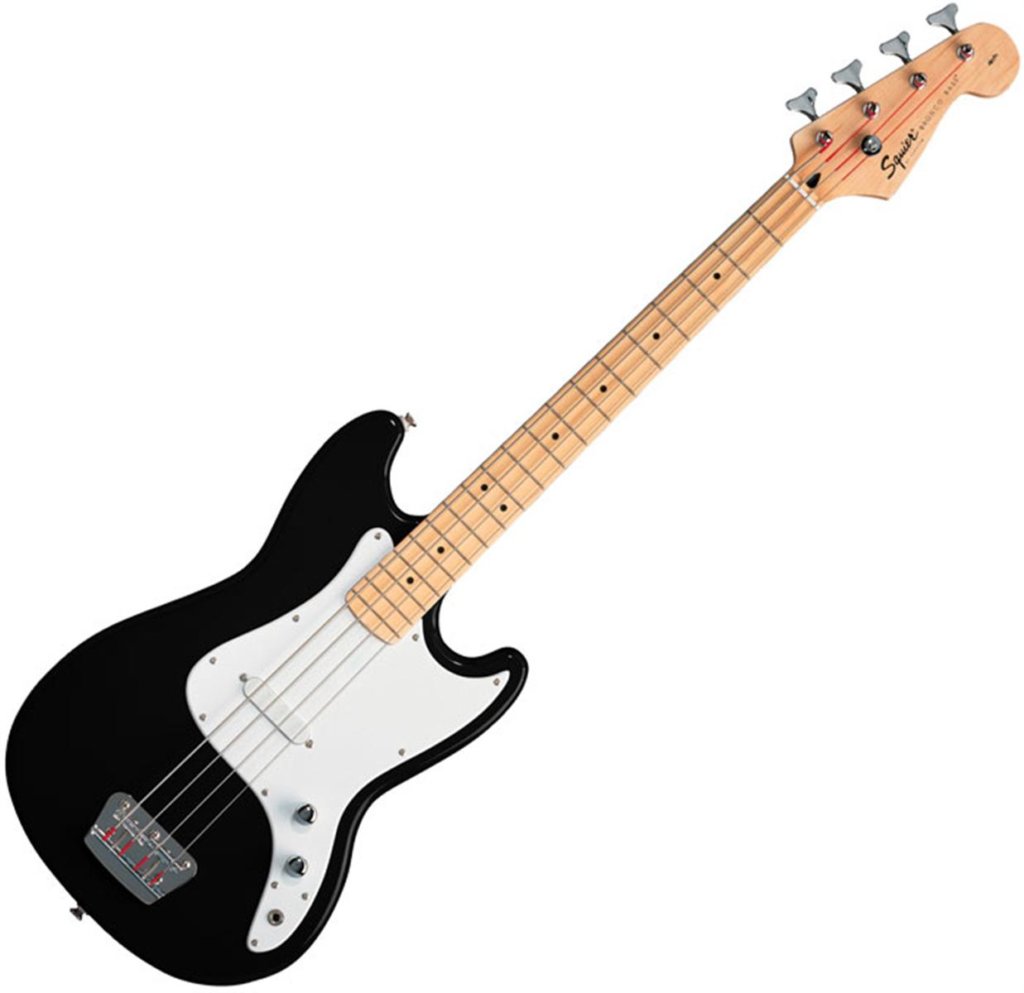
The system of sound production in a bass guitar is the same as that of an electric guitar. Bass Guitars are only available in electric guitars and not in acoustic guitars. It’s playing style separates itself from other guitars on the list.
How to play the bass guitar?
Bass guitars are more like a bridge to the drummers and chordal instruments (like keyboard and other types of guitars). The best bass players tend to stick to the following rules:
- Bass Guitar is always played in sync with the drummer. Particularly with the kick drum, which is also known as the bass drum, a bassist and drummer who are rhythmically aligned will make a band sound fantastic.
- Roots and rhythm are on a focus. A bassist’s job is to provide harmonic and rhythmic stability. If you’re looking at a chart that calls for a D major chord, play note D before embellishing with any pull-offs or glissandos. Your first duty is to support your singer or any other instrument who might be taking a solo (like a saxophonist or guitarist).
- Bassists’ should always be in tune: Since a bass player typically plays roots, it’s imperative that you always have a tuned instrument. Fortunately, you have a few security blankets. For one thing, big heavy bass strings rarely slip out of tune. Secondly, because of the laws of physics, low-end frequencies can slip a little bit out of tune and not be perceptible to most people. (Contrast this with high-pitched instruments like flute and violin. When they’re out of tune, everyone can hear it—again owing to the physics of sound waves.)
Pros and Cons:
Pros
- Easy to Start: Out of all the instruments you’ll see in most rock, pop, or jazz groups, the electric bass is most often the easiest to pick up and start playing right from the get-go. Unlike other guitars, which often requires multiple notes and tough memorization of chords, the bass guitar often has longer rhythms and only single notes.
- The Bass Gets the Audience moving: The bass speaks out loud the feel and mood of a song more so than any other instrument. Unlike the drummer who keeps the band in rhythm, the bass instrument provides the song an edge to the sound while leaving the audience awestruck.
- Every Band Needs One: Check your local ads for wanted bands. Chances are that most of the open positions for most bands or music groups will be for bass players. The fact of the matter is, the bass is the least common instrument that people in bands choose to play, so there are almost always open positions for bass players. After all, every band needs one.
Cons
- Bass Guitarists aren’t as popular as other types of Guitarists.
- Because bass guitarists do not play lead and keep playing the rhythm, their voice isn’t that obvious when performing in a band.
Lap and Pedal Steel Guitars:
The steel guitar is distinctive because it is played horizontally. Either across the player’s knees or on its own legs. There are two main varieties of the instrument, which is played using the metal slide, or ‘steel’, from which the guitar takes its name. The steel is held in the left hand when used by a right-handed player. The two main variations in it are the lap steel guitar, which typically has six strings, and the pedal steel guitar, which can have more than 6 strings. Pedals and knee levers are used to alter the tuning on particular strings of the guitar whilst playing which, along with the sliding action of the steel, gives the pedal steel its distinctive voice, one that is most often heard in country music and western swing.
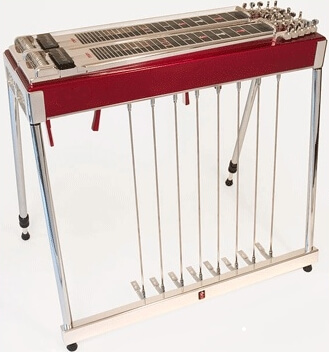
The sound in a lap guitar is produced in a similar manner, as in an acoustic guitar or an electric guitar. However, there is a difference in the style of playability. The chords that are held by the left or right hand of the guitarist depending on whether he/she is a leftie or rightie are held by the metal slide.
History of Pedal Steel Guitars:
Perhaps the biggest step came in 1932 when the first production electric lap steel guitars were made. Later which amplification was no more a part of the team. This made hollow guitar bodies replaced by flat slabs of wood. Inspired by the new possibilities, the musicians explored alternate tunings and even added extra necks or legs so they could play while standing. Another innovation came later when Alvino Rey invented the “talking” steel guitar, which incorporated foot pedals that offered players a new layer of control to raise the pitch of each note. Then in 1952, player Zane Beck added knee levers to enable the player to also lower the pitch.
In spite of its complexity, the pedal steel’s potential is nonetheless being explored by a wide variety of artists across genres. In fact, you may be able to pick out the pedal steel in new ballads from rock bands like Kings of Leon or even the electro-inspired experimental songs of Björk—let alone in most of the country’s top 10. Yet regardless of where you may find it, be sure to listen in to experience the culmination of over 140 years of musical heritage.
Point of similarities and differences between a lap steel guitar and a pedal steel guitar:
- Slide Guitars: Both lap and pedal steel guitars are slide guitars, they are made using a steel, glass, or ceramic slide bar to produce different notes on the fretboard. The slide is placed lightly on the strings, guided by the player, and slid up and down the fretboard to produce the signature “slide” guitar sound.
- Strings and Tuning: Lap and pedal steel guitars come in different models which use from six to eight strings. There are hundreds of tuning possibilities, with the most common being “open chord” tuning, in which strumming of the strings produces a particular chord. Lap steel guitars are sometimes tuned to the standard guitar pitch, “EADGBE”, from low to high. Musical Styles of Both lap and pedal steel guitars are used in folk, country, Hawaiian, and some blues and rock music, with the main difference being them i.e. the desired musical effect.
- Playing of the Position: Lap steel guitars suits the player’s lap. However, you may find players using it on a small stand too. On the other hand. Pedal steel guitars do require a stand. This is because these have bars and levers mounted right below the guitar. The best part is that the Lap guitars are highly portable while requiring too little setup time.
- Primary Difference: Laps steel guitars tuning happens statically, as in any stringed instrument where tuning does not change during actual playing. The pedals and levers on a pedal steel guitar, that are operated by the player’s foot and knee, allow tuning changes to occur as the player performs. This additional function makes pedal steel guitars more versatile in musical keys and playing effects, but in contradiction also makes them more difficult to learn.
Twelve String Guitar:
There are those who classify twelve-string guitar under acoustic instruments. But it doesn’t mean that electric twelve-string guitars do not exist at all. They do! More often, a twelve-string electric guitar can be found as a double-neck guitar. Twelve-string guitars produce comparatively a louder ringing tone than six strings. However, they are a bit harder to play and to maintain. A standard guitar can cost a lot lesser and is very easier to maintain. Twelve-string guitars are mostly suitable for niche roles and strictly for rhythm jobs. To play, you can copy the same fashion as a six-string guitar, as the strings are paired together. Playing them is more difficult because the additional strings require more pressure to depress. It is also more difficult to bend notes using this guitar tunefully.
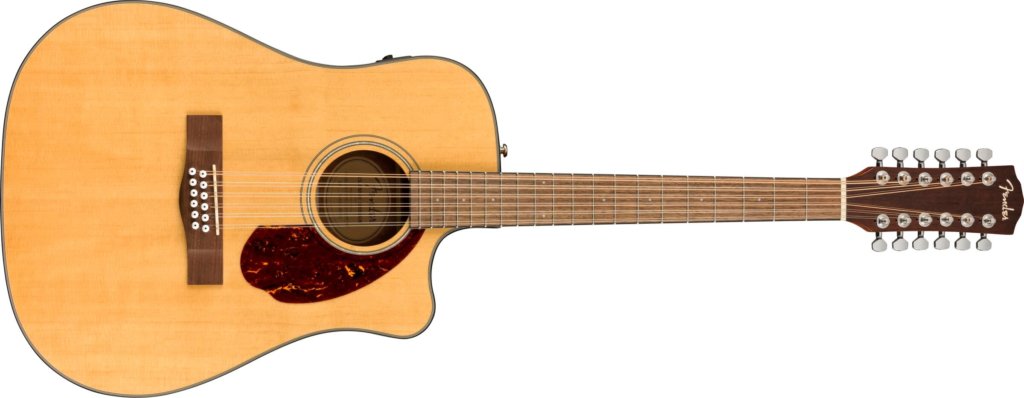
History of twelve-string guitar:
No one knows for sure from where did the modern-day 12-string guitar come. But the two most likely scenarios are either Italian or Mexican immigrants. Italian music has a long history of double-stringed instruments such as the lute and mandolin. In theory, Italian luthiers work in American guitar factories experimented with doubling the strings of a standard 6-string guitar.
Remember that more strings not only mean more music, they can also mean more noise. However, it depends on the playability of the master. Twelve-string guitars are usually more expensive than your average acoustic or electric and tend to wear out faster due to the additional strain on the neck.
The sound produced in a twelve-string guitar is similar to the way it happens in an acoustic or an electric guitar. However, what differentiates a twelve-string guitar from a 6 string guitar is the tuning system and it’s playing style.
Tuning style:
The tuning of the bottom four strings (E, A, D, and G in a 6 string guitar)is very usual. However, the doubled-string underneath each of these four strings has a different way of tuning. These tune at one octave higher compared to the six-string guitar. The top two strings (B and E in a 6 string guitar) and their counterparts tuning are in unison. Except for the Rickenbacker guitars 360/12, in which the order reverses. The resulting sound adds a “shimmering” quality to the tone of the guitar that provides extra volume and a chorus-like effect to the instrument.
Technique:
Because of the difficulty in bending the string or soloing quickly, 12-string guitars fill in for rhythm instruments. They are rarely used as solo instruments unless a master is playing it. 12-strings are usually played with a flat pick, their double-stringed setting makes it difficult to play with most fingerpicking methods, but fingerpicking is still possible. 12-string electric guitars with their lighter gauges are much easier to play. However, the reverberant, shimmering tone still compromises them for the rhythm instruments.
Pros and Cons:
Pros
- The most obvious positive to having a 12-string guitar is that they have a rich and beautiful sound that you will never get from a traditional 6 string guitar. Because of the increase in a number of strings, you get a fuller effect that can transform a song from just about any genre into something special.
- You can use a 12 string guitar for the blues, country, jazz, and a variety of other situations. If you are a working musician, either as a full-time or just something to do on the weekends, owning one of these can give you an extra feather in your house for individual songs from your setlist.
Cons
- Starters will spend more time tuning your 12-string guitars because the workload is just double to that in a 6 string.
- With 12 string guitars, one should also need to get accustomed to physical differences in the body. The action is a little more intense with these instruments which means, you’re going to need to push down a little harder to get the usual chords.
- Since you’re dealing with twice the amount of strings, changing them out from time to time can also be a bit of a bore.
Resonator Guitar:
People often refer to it as ‘steel’ guitars that they aren’t. An acoustic resonator guitar is distinctive in not having a regular soundhole, but a large – usually circular – plate that conceals the resonator cone. This cone made from spun aluminum closely resembles an audio loudspeaker. The bridge of a resonator guitar connects either to the center of the cone or to the edge. However, the strings’ vibrations amplify and project outwards through the perforated plate that is present on the guitar’s top. Nowadays, the most common resonator guitars have a single cone, although the original model has three. Resonators possess a loud, bright voice which makes them easily heard in a large room or in the open air. Popular with blues musicians, and country players the resonators are played in a wide variety of genres. You can play these in the conventional style, or with a metal or glass slide.

Guitarists are, in several notable ways, a bit like magpies. When they see an eye-catching guitar, they tend to glaze over, and they are compelled to take this shiny object back to their nest. In this regard, the Resonator is perhaps the shiniest of all guitars and attracts players like moths to a flame. This classic design is popular among all levels of guitarists in a variety of styles and its distinctive styling is featured on many classic album covers (perhaps most famously, Dire Straits ‘Brothers In Arms’).
How is the sound produced?
The standard acoustic guitar’s tone relies heavily on the tonewoods. However, a resonator guitar transfers the vibration from the strings to the bridge which connects to the resonator or resonators. Depending on the configuration of the resonator cones, the transfer of sound waves happens. Either directly up through the sound plate or into the body before exiting via the sound plate and sound holes found on either side of the neck.
Resonators have a very unique sound. Though it is effectively an acoustic guitar, the metal resonators used in the guitar lend it a far brasher tone, with a slightly boxy (in a good way) mid-range. Aside from the increase in volume, the resonator’s unique tone cuts through most mixes and performances far more easily than a regular guitar. It became a popular choice for blues and bluegrass players, though since its appearance it has found its way into the country, folk, rock, and countless other styles.
Not only does the cone shape is popular because of being ‘funnel shape’ in nature, but also because it provides direct sound waves. However, resonator guitars’ capacity to provide greater stiffness using a thinner material is noteworthy. If you think about this guitar if trying to move air in a fanning motion with a flat sheet of composite paper the paper will fold. However when shaped like a cone it is much stiffer and far less likely to fold, allowing for greater resonance by providing greater strength while utilizing a thin, yet stiff configuration.
Pros and Cons:
Pros
- The neck of resonator guitars is very attractive.
- Most of the resonator guitars are very attractive looking and made up of metal. The large resonator beneath the strings makes it look more attractive than acoustic guitars.
- Since the name is resonator guitar and due to its mechanism, the sound produced by this guitar has a lot of resonance and so it lasts longer than the sound produced by any acoustic guitars.
Cons
- Adjusting the intonation of resonator guitars is difficult. On changing the strings, the bridge of the guitar becomes loose and you have to change the intonation every time.
- Because of the complex construction, the guitar is not easy to maintain for a larger lifetime. Usually, there are complaints about the maintenance after two years or so. Also, every time you need to do maintenance, it costs more than the maintenance cost of acoustic or electric guitars.
Types of Guitars Apart from the Above List
There are a few other different kinds of guitars. Here is a quick bite for the same.
- The Mandolin: Mandolins are a bit like strummed violins. The tuning happens in the same way. Albeit, with double the number of stings, strumming is still the same, unlike the ones played with a bow. They have a very bright, trebly sound and are popular in styles of music like the ones similar to folk.
- The Banjo: Banjos have five strings. The tuning happens on an open G chord. Instead of having a soundhole like a guitar, it’s better to have a banjo that has a drum for a body. They are all treble and no bass, giving them a very heavy top sound. Banjos are very popular in styles of music such as folk, bluegrass, and country.
- The Ukulele: Ukuleles are small Hawaiian instruments with four strings that look a lot like miniature versions of guitars. Like the mandolin and the banjo, a ukulele produces trebly, delicate, ‘twinkly’ sound. They’re ideal for people who want to play and/or write songs, but find guitars to be a bit big for them to accommodate or travel with. Ukulele is popular in traditional Hawaiian music. There’s also been something of a craze of ukuleles at open mic nights and on Youtube over the last few years!
The Conclusion:
The guitar is one such musical instrument that comes in many forms and still has the potential to change its type based on the construction and sound production. The professional guitarists customize guitar according to the level of proficiency they need in this instrument. Big manufacturers of Guitar, continue to experiment with their styles by collaborating with expert players and that’s how innovations in guitar happen. Pickups are the innovations that come more often because they are directly responsible for the production of sound in an electric guitar.
Some of the most common points to consider before buying a guitar are:
- Always play the guitar before buying it.
- Decide which type of guitar you wish to buy.
- Don’t be much dependent on the brand
- Look out for accessories of the type of guitar that you wish to buy
Hope this guide has served its purpose of providing basic information about some of the most standard types of guitars, how sound is produced in an electric and an acoustic guitar and the change in types of playability that is found while playing the bass guitar, a twelve-string guitar and a lap or pedal steel guitar.


